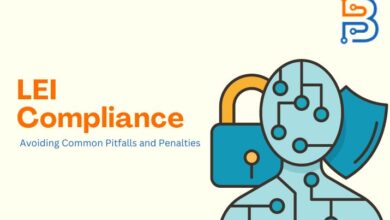Things to Know When Filing as an S Corp

An S Crop is a corporation that selects to pass corporate income, deductions, losses, and credits to its shareholders. Filing as an S Corp can be a beneficial choice for many small businesses. It offers tax advantages, liability protection, and flexibility in terms of ownership. However, several important considerations and requirements exist when opting for S Corp status. In this comprehensive guide, we will delve into the key things you need to know when filing as an S Corp to cover everything from eligibility and formation to taxation, compliance, and ongoing management.
What is an S Crop?
An S Corp is a detailed tax designation controlled by the taxation code’s subchapter (S), where it gains its name. LLCs and corporations can select (S) levels if they meet the criteria detailed in this subchapter, primarily focusing on restrictions regarding stock and shareholders. The key characteristic distinguishing an S Corp is its (pass-by) tax structure, wherein it is not liable for corporate revenue tax. Rather, credits, losses, corporate income, and deductions are passed to shareholders for federal tax objectives. It’s important to note that an S Corp is not a distinct company structure businesses need initially establish themselves as a corporation or LLC. Subsequently, they can select to be taxed as an S Corp, with the motivations for opting for S Corp quality varying depending on individual circumstances.
Filling Requirements for an S Crop
To initiate the formation of an S corporation, your small business should begin by establishing itself as a corporation. This involves filing the necessary articles of incorporation with the relevant state regulatory body and satisfying the associated filing fees. Once the incorporation process is finalized, shareholders must execute Form 2553, the ‘Election by a Small Business Corporation,’ which must be submitted to the Internal Revenue Service (IRS). You’ll be required to designate a board of directors, plan for annual board meetings, and draft and submit corporate bylaws akin to an LLC operating agreement. Here are the specific requirements:

Eligibility Criteria
S corporations have specific eligibility criteria for shareholders. Shareholders must be living individual entities like corporations or partnerships that typically do not qualify as shareholders in an S corporation. Furthermore, not all types of trusts are eligible to be shareholders, but the following categories can participate:
- Grantor trust
- Testamentary trusts
- Qualified Subchapter S trust (QSST)
- Electing small business trust (ESBT)
Certain tax-exempt organisations, like nonprofits, can be shareholders in an S corporation. It’s important to note that only U.S. citizens or resident aliens can become shareholders in an S corporation, while non-resident aliens do not meet the criteria.
Incorporation Process
To become an S Corporation, you must first incorporate your business as a C Corp or a Limited Liability Company (LLC). Once incorporated, you can select S Corp by filing Form 2553, Election by a Small Business Corporation, with the IRS. This election must be made within a specific timeframe, typically no later than 75 days behind the corporation’s formation. It’s essential to consult with a qualified tax professional or attorney when incorporating and making the S Corporation election to ensure the process is completed correctly and within the required timeframe.
Reasonable Compensation
When you operate as an S Corporation, paying yourself and other shareholders a reasonable salary is essential. This salary should be commensurate with the services you provide to the business. The IRS closely scrutinises S Corporations that pay unreasonably low salaries to shareholders to avoid payroll taxes. Failing to pay a reasonable salary can lead to IRS audits and penalties. A tax professional can help you determine a reasonable salary for your role within the company.
Read Also: Steps To Write A Great Blog Post Outline
Distributions vs. Salary
As an S Corporation shareholder, you can receive income from the company in two ways: through salary and distributions. Salary is subject to employment taxes, such as Social Security and Medicare, while distributions are not. This has led some business owners to minimise their salaries and maximise distributions to reduce their tax liability. However, as mentioned earlier, the IRS requires shareholders to pay themselves a reasonable salary. Distributions should only be taken from the company’s profits after paying reasonable salaries and covering other necessary business expenses. Attempting to classify all income as distributions while avoiding payroll taxes is a common trigger for IRS audits and penalties.
State Requirements
A corporation functioning under the regulatory framework of a specific state adheres to its distinct set of regulations and prerequisites. When seeking S corporation status, it’s essential to consider not just the federal prerequisites but also those of the state where your company is incorporated and any other states where your business conducts operations. To illustrate, certain states seamlessly acknowledge the federal S corporation election, whereas others do not. A separate state-specific election might be obligatory in states that don’t automatically accept the federal election, like Louisiana or Arkansas.
Ongoing Compliance
Maintaining S Corporation status requires ongoing compliance with IRS regulations. This includes filing annual tax returns, meeting state and local tax obligations, and keeping accurate records of corporate activities. Failure to do so can result in the loss of S Corporation status and adverse tax consequences. Additionally, S Corporations are subject to specific rules and limitations on shareholder changes and stock transfers. Shareholders should know these restrictions and seek legal advice when selling or transferring shares.
Limited Liability Protection
While S Corporations offer several tax advantages, they also provide limited liability protection to their shareholders. This means that, in most cases, shareholders are not personally answerable for the corporation’s liabilities and debts. Their liability is generally restricted to their investment in the business. However, it’s essential to maintain proper corporate formalities, such as holding regular board meetings and keeping business and personal finances separate, to preserve limited liability protection. Failure to do so can lead to a legal concept called “piercing the corporate veil,” where a court may hold shareholders personally liable for the corporation’s debts.
Final Verdicts
Filing as an S Corporation can benefit many small businesses, offering tax advantages and limited liability protection. However, it’s crucial to meet the eligibility criteria, follow the correct incorporation process, and comply with IRS regulations to enjoy these benefits fully. Additionally, shareholders must understand the nuances of pass-through taxation, reasonable compensation, and the importance of ongoing compliance to ensure the long-term success of their S Corporation. Consulting with tax professionals and legal advisors is highly recommended to effectively navigate the complexities of S Corporation taxation and governance.






